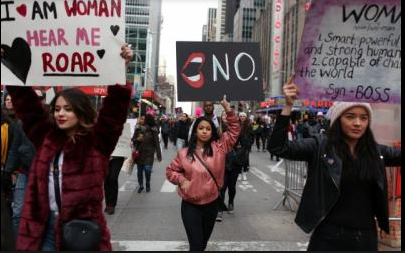|
Getting your Trinity Audio player ready...
|

Introduction
In every corner of the world, women have been at the forefront of advocating for their rights, challenging societal norms, and pushing for gender equality. From grassroots movements to international campaigns, the fight for women’s rights has seen both challenges and triumphs. In this blog post, we will delve into the diverse landscape of women’s rights movements around the globe, exploring the obstacles they face and the victories they celebrate.
The Global Struggle for Gender Equality
Women’s rights movements have long been a global phenomenon, with activists rallying for change on various fronts. From the suffragette movements of the late 19th and early 20th centuries to contemporary battles for reproductive rights and equal pay, women have continuously fought against discrimination and oppression.
Challenges Facing Women’s Rights Movements
Despite significant progress, women’s rights movements continue to face numerous challenges. In some parts of the world, cultural norms and religious beliefs still perpetuate gender inequality, restricting women’s access to education, healthcare, and employment opportunities. Additionally, violence against women remains a pervasive issue, with rates of domestic violence, sexual assault, and human trafficking alarmingly high in many regions.
Intersectionality and Inclusivity
One of the critical aspects of contemporary is the recognition of intersectionality. Women’s experiences are shaped not only by their gender but also by factors such as race, class, sexuality, and disability. Intersectional feminism seeks to address the unique challenges faced by women from marginalized communities and advocates for inclusivity within the movement.
Celebrating Triumphs and Milestones
Despite the obstacles, women’s rights movements have achieved significant victories over the years. The ratification of international treaties such as the Convention on the Elimination of All Forms of Discrimination Against Women (CEDAW) and the Beijing Declaration and Platform for Action have provided frameworks for advancing gender equality on a global scale. Moreover, landmark legal victories, grassroots campaigns, and the rise of influential women leaders have propelled the movement forward.
The Role of Men as Allies
While women have been at the forefront of the struggle for gender equality, the involvement of men as allies is crucial for meaningful progress. Men can use their privilege to challenge harmful gender norms, advocate for women’s rights, and actively participate in efforts to dismantle patriarchal systems.
Addressing Backlash and Resistance
Despite the progress made by women’s rights movements, there has been a notable backlash from conservative forces seeking to maintain traditional power structures. In some countries, lawmakers have enacted regressive policies aimed at restricting women’s reproductive rights or limiting their participation in public life. Additionally, online harassment and smear campaigns often target women activists, attempting to undermine their credibility and intimidate them into silence. However, these challenges have only served to galvanize the resilience and determination of women’s rights advocates, fueling their commitment to effecting change.
The Importance of International Solidarity
Women’s rights movements are increasingly interconnected, with activists collaborating across borders to share resources, strategies, and support. International solidarity plays a crucial role in amplifying voices, mobilizing action, and holding governments and institutions accountable for their commitments to gender equality. Whether through global campaigns, solidarity marches, or transnational networks, the solidarity of women and allies worldwide strengthens the movement and fosters a sense of collective empowerment in the pursuit of a more just and equitable world.
The Future of Women’s Rights Movements
As we look to the future, it is essential to recognize that the fight for women’s rights is far from over. Continued advocacy, education, and solidarity are necessary to address remaining inequalities and create a world where all individuals can thrive regardless of gender. By amplifying women’s voices, challenging systemic barriers, and fostering inclusive spaces, we can build a more equitable and just society for future generations.
Conclusion
Women’s rights movements around the globe have made significant strides in advancing gender equality, but the journey is far from complete. By acknowledging the challenges, celebrating the triumphs, and remaining committed to the cause, we can continue to drive meaningful change and build a more inclusive world for all.
you can find more here:

